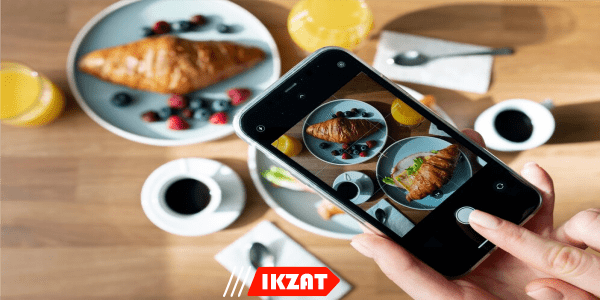In today’s digital age, the art of food photography has become more accessible than ever before. With the powerful cameras embedded in modern smartphones, anyone can take stunning, Instagram-worthy food photos with just a few taps. In this comprehensive guide, we will explore various techniques and tips to elevate your food photography game, ensuring that your culinary creations look as delectable online as they do in real life.
Choosing the Right Smartphone for Food Photography
Camera Quality and Features
When it comes to food photography, the quality of your smartphone camera is paramount. Look for smartphones with high-resolution cameras, advanced image processing capabilities, and features like optical image stabilization (OIS). Popular choices among food photographers include the iPhone series, Google Pixel, and Samsung Galaxy models. These phones offer exceptional camera performance and a suite of features tailored to capturing detailed, vibrant images.
Lens Options and Capabilities
Modern smartphones often come with multiple lenses, including wide-angle, ultra-wide, and macro lenses. Understanding when to use each lens can significantly impact your food photos. For instance, a macro lens is ideal for capturing intricate details of your dish, while a wide-angle lens can help you include more elements in the frame, creating a dynamic composition.
Lighting: The Key to Stunning Food Photos
Natural Light vs. Artificial Light
Lighting is the cornerstone of photography, and food photography is no exception. Natural light is often the best choice, providing a soft, diffused illumination that enhances the colors and textures of your food. Position your dish near a window, and use sheer curtains to soften harsh sunlight.
If natural light is not available, consider investing in artificial lighting options. LED light panels, ring lights, and softboxes can mimic natural light and give you control over the lighting conditions. Avoid using the built-in flash on your smartphone, as it can create harsh shadows and unflattering highlights.
Direction and Intensity of Light
The direction and intensity of light play crucial roles in food photography. Side lighting is particularly effective, highlighting textures and adding depth to your images. Experiment with backlighting to create a soft glow around your dish, making it appear more appetizing. Adjust the intensity of light to prevent overexposure or underexposure, ensuring that all elements in your frame are well-lit.
Composition Techniques for Eye-Catching Food Photos
Rule of Thirds
The rule of thirds is a fundamental principle of photography that can help you create balanced and visually appealing compositions. Imagine dividing your frame into a grid of nine equal parts, and place the main elements of your dish along these lines or at their intersections. This technique draws the viewer’s eye to the most important parts of your photo.
Leading Lines and Symmetry
Incorporating leading lines into your composition can guide the viewer’s eye towards the focal point of your photo. Use elements like cutlery, table edges, or napkins to create these lines. Symmetry is another powerful compositional tool; symmetrical arrangements can create a sense of harmony and balance in your food photos.
Layering and Depth
Adding layers to your composition can create a sense of depth, making your photos more dynamic and interesting. Use props like plates, bowls, and utensils to build layers around your main dish. Experiment with placing elements at different distances from the camera to create a three-dimensional effect.
Editing: Enhancing Your Food Photos
Choosing the Right Editing Apps
Editing is an essential step in the food photography process. There are numerous editing apps available that can help you enhance your photos. Popular choices include Adobe Lightroom, Snapseed, and VSCO. These apps offer a range of tools for adjusting exposure, contrast, saturation, and more.
Basic Editing Techniques
Start with basic adjustments like exposure and white balance to ensure that your photo is well-lit and color-corrected. Increase the contrast slightly to make your food pop, and adjust the saturation to enhance the colors. Be careful not to over-edit, as this can make your photos look unnatural.
Advanced Editing Tips
For more advanced editing, use tools like selective adjustments and masking to fine-tune specific areas of your photo. Sharpening can enhance the details of your dish, while noise reduction can improve the overall clarity. Experiment with filters and presets to find a style that suits your aesthetic, but always aim for a natural look.
Practical Tips for Taking Instagram-Worthy Food Photos
Styling Your Food
Presentation is key in food photography. Take the time to style your dish thoughtfully, arranging the elements in a visually pleasing manner. Garnish your dishes with fresh herbs, spices, or sauces to add color and texture. Use props like tablecloths, cutting boards, and utensils to enhance the overall aesthetic.
Angles and Perspectives
Different angles can dramatically change the look of your food photos. Overhead shots, also known as flat lays, are popular for capturing the entire dish and its surroundings. A 45-degree angle is versatile, providing a natural perspective that showcases the dish’s details. Close-ups can highlight the texture and intricacy of your food, making it look even more appetizing.
Capturing Motion
Incorporating motion into your food photos can add a dynamic element and make your images more engaging. Capture moments like pouring syrup, sprinkling spices, or cutting into a dish. Use burst mode or a fast shutter speed to freeze the action, ensuring that your photo remains sharp and clear.
Conclusion
Mastering food photography with your smartphone is a rewarding journey that combines creativity, technical skills, and a keen eye for detail. By choosing the right smartphone, utilizing effective lighting, applying compositional techniques, and enhancing your photos through editing, you can create stunning, Instagram-worthy food photos that captivate your audience. Remember to experiment and have fun, as practice is key to improving your photography skills.













